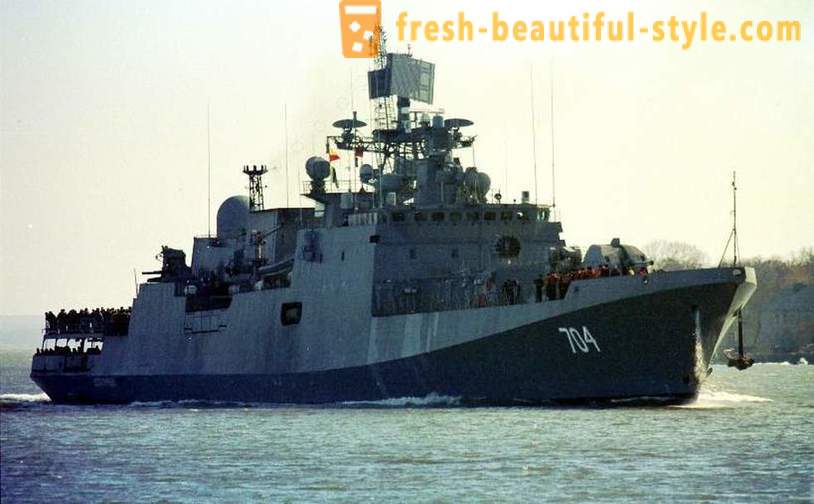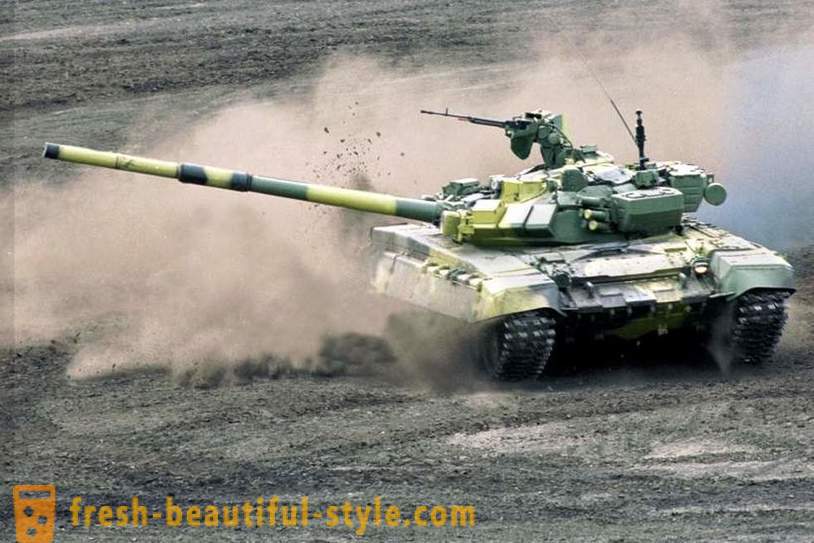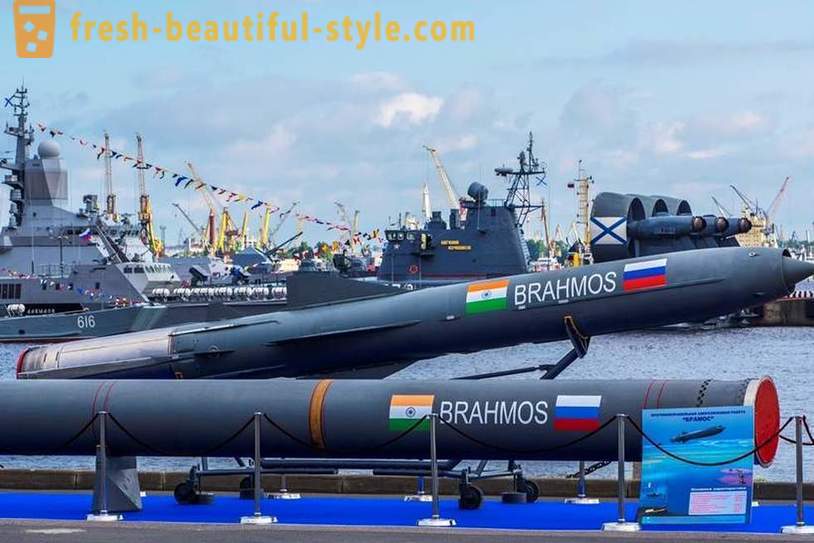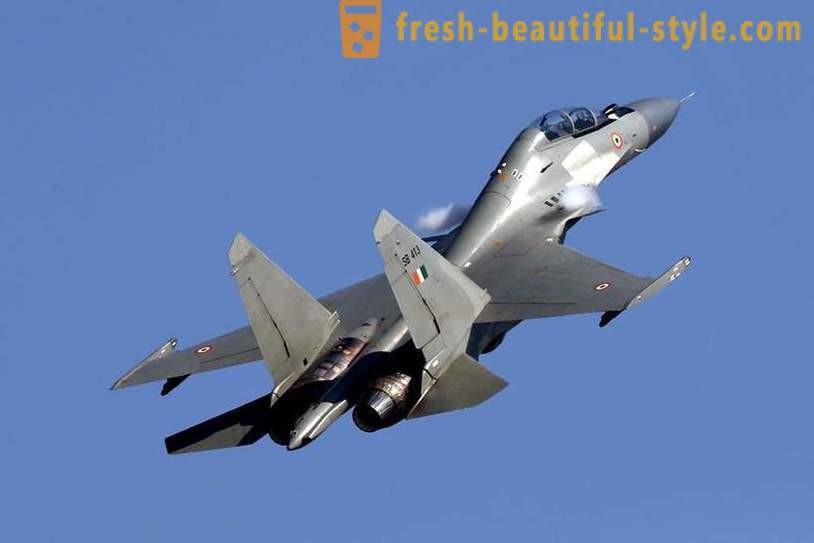The largest military projects between Russia and India
Most transactions in the last two decades have included participation in the development of the Indian side (it is, of course, mainly talking about the financing) and / or the production of purchased products.

The farther, the more difficult it becomes to sell something without India's participation in the program Make in India, involves the transfer of the production technology to the customer.
Military-technical cooperation (MTC) with India is a key for the Russian military-industrial complex (MIC). During the time period from 2011 to 2015, 39% of Russian arms exports had on India, and from 2000 to 2015, Moscow supplied Delhi military products worth $ 30 billion (at the rate of 1992 dollars). We have compiled a list of the most expensive, effective and important joint projects in the sphere of military-technical cooperation between Russia and India.

Su-30MKI multi-role fighter
The biggest and best military deal between India and Russia clearly has been the development and delivery of 230 double multipurpose fighters Su-30MKI ((contracted 272 machines). This fighter modification, created based on the fourth generation Su-27 fighter, it was developed specifically for the Air . India's strength Later, on the basis of the resulting very good fighter, a modification of the Su-30cm was created -. even for the Russian Air space forces (VKS) it is worth noting that the development of the Su-30MKI has been carried out in the hardest for ro ssiyskogo MIC 1990s, when government funding after the collapse of the USSR virtually absent. India has invested in the purchase of 272 fighters at least $ 12 billion, along with the Chinese orders for aviation equipment, largely saved Russia's military aviation industry.
Since 2004, the Su-30MKI fighter jets produced by the Indian corporation license HAL (Hindustan Aeronautics Limited). It basically comes to mashinokomlektov assembly sent from Russia, but a small part of the aircraft units do produce in India. Close to signing an agreement for the modernization of almost all the existing Indian fleet of Su-30MKI to the level of Super Sukhoi -.. The plane will have to get a new engine AL-41F1S, radar with active phased array antenna, the new radio-absorbing coatings, etc. The contract value could reach fantastic $ 8 billion. Since 2012, I went into production Su-30cm - even for video conferencing Russia. At the moment, there is a contract for 116 fighter aircraft (each about $ 50 million at 2012 prices) in the future their number could well exceed two hundred. Itself refers to the generation plane 4+ occupies an intermediate position between the 4th and 5th generation planes. Sufficiently powerful avionics, engines AL-31FP engines with thrust vectoring, a large combat range and high flexibility make the Su-30MKI / SM one of the best heavy fourth generation fighter in the world.

main battle tank T-90
Russia has for many years by a wide margin remains the leader in export of new tanks. What is the secret of this success? In many respects it is connected with the successful export of the T-90S and a huge contract with India's first direct purchase, and later - on the licensed assembly of these vehicles on their territory. The first T-90 India was granted in 2001, a total of existing contracts in 1657 India will get tanks of this type (their production is still going on). The cost of the T-90S is about $ 2, 5 million. In 2016, it was reported that the Indian military have approved the transaction for the purchase of 464 more tankokomplektov (for assembly in India), the latest Russian T-90MS. The new modification of the T-90 began to cost about $ 4, 3 million Therefore, at the time of completion of the execution of contracts signed India's armed forces will have at its disposal in 2121 T-90 tank -. Almost four times more than the Russian army (about 550 units ).
Explain the great success can be an excellent price-performance ratio of T-90. If the price of western third generation tanks start at $ 6 million and go up to $ 10 million, then even the "fancy" modification of T-90MS is worth a half to two times less. With this experience of the Syrian conflict suggests that the same "hyped" the German Leopard 2 is not worse than any other punched antitank missile system of the 1980s development. In addition, in contrast to Western tanks, the T-90 has automatic loader guns, reducing the number of crew members from 4 to 3, and is also saving - both in the training of "excess" military and its content (and in injury - and the treatment).

of BrahMos anti-ship missiles
Another very successful joint project is a supersonic anti-ship cruise missile (ASM) of BrahMos (named after the river Brahmaputra and Moscow). Despite its original name, the new RCC in this quite small - in fact, it is a Russian missile modification of P-800 "Onyx", created specifically for the requirements of India and with the transfer of the technology for its production. However, PKR BrahMos is one of the most successful products in its class: it can help to hit the enemy ships at a distance of 300 km, the missile can reach speeds of up to 2, 8 M (Mach number is the speed of sound). BraMos is a universal RCC - it can be launched from submarines, ships, coastal launchers and, very soon, they will be adapted to the Su-30MKI. Recently, March 11, 2017, the test was successful BraMos-ER upgraded ASM, range is increased to 450 km. Already produced hundreds of missiles, and the total of plans to increase their number of about 2000, with the value of one RCC is approximately $ 2 million There are also plans and joint BrahMos exports to third countries, and in the future -. The development of hypersonic BrahMos-2 RCC.

The frigates of Project 1135.6 "Talwar"
Project 1135.6 frigates "Talwar" were developed in the 1990s based on the patrol ship project in 1135 on its own initiative "Northern design bureau." They were originally created for the Indian order and under the requirements of the buyer. A series of the first three frigates built at the Baltic Shipyard in St. Petersburg from 1999 to 2004. After that, in 2006, a contract was signed for the construction of three more "Talwar" in the Kaliningrad factory "Amber" for $ 1, 6 billion. The ships are built using radar stealth technology (Stealth) and are eight universal launchers for the missiles "Caliber" ( in export modification) and BrahMos. As in the case of the Su-30MKI, the product proved to be successful, it has been designed and "run" at the expense of the foreign customer and therefore attractive for the Russian military. As a result, for the Russian Navy two series of three patrol boats were laid Project 11356 is a modification of the very Indian "Talwar". The cost of each of the series was about 40 billion rubles. The first three ships for the Russian Navy have already been built, two of them are put into service, the third held the final stage of testing and will be adopted by summer 2017. As for the second series of ships - their construction for the Navy of the Russian Federation has become impossible after breaking the military-technical cooperation between Russia and Ukraine - the gas turbine power plants of the desired type is not produced in Russia, and the development of analogues will take a long time. At the same housing two ships have already been laid.
From unpleasant situation will exit India - between the two countries signed an agreement that laid 2 frigate completed in Russia and Delhi itself will purchase engines for them in Ukraine and acquire the ships themselves. After that, two more ships will be built entirely on the Indian shipyards under license in the program Make in India. As a result, India will become the owner of six frigates of Project 1135.6 "Talwar" and 4 related frigates of Project 11356.
a fifth-generation fighter the FGFA
The most promising, but at the same complex of the Russian-Indian projects in the field of military-industrial complex is a fifth-generation fighter FGFA (Fifth Generation Fighter Aircraft). As in the case of the Su-30MKI, the basis for the machine will be ready Russian fighter - in this case T-50 PAK FA (Sukhoi PAK FA). Now T-50 passes the final stage of testing, according to the plans in 2018 should begin the first small-scale supply of these fighters for the Russian army. However, the project is progressing FGFA where with great difficulty - the country is not the first year can not agree on a contract for the development activities (R & D). Starting in 2013 the Indian military began to have different claims to the plane - they are mainly related to the engine AL-41F1, lack of radar stealth machine, as well as opportunities avionics (avionics). If the questions are really the engine (including the Russian military) and the development is a new power plant "Type-30", the other claims seem rather far-fetched. Especially with regard to the avionics - FGFA, as the PAK FA will be equipped with the latest radar with active phased array antenna N036 "Squirrel", a new optical-location station OLS-50M and a modern system of electronic warfare, all these systems work in the same complex minimizing the effort of the pilot.
In 2016, complaints began to disappear gradually and periodically began to appear in the Indian media speculation that the contract for the ROC is close to signing. This information in February 2017 was confirmed by the Deputy Director of the Federal Service for Military-Technical Cooperation Service (FSMTC) Vladimir yeast. Also featured in the rumors reports that India "bargained" reduction in the contract price by 40% (up to $ 4 billion on each side) and the transfer of 40% of the production technology (instead of 25%). However, according to the latest rumors that appeared in The Times of India newspaper, India wants to complete the transfer of technology, as the country's leadership dissatisfied with that in the case of the same Su-30MKI and failed to master the full production of fighter aircraft by HAL - actually assembles only. The Russian side has reacted to the proposal in cold, so bargaining and negotiation FGFA development may be delayed indefinitely. Such an attitude of the parties can understand - we are talking about the production of at least 127 fighters that cost at least $ 25 billion, which is an enormous sum even for very advanced VTS India and Russia. Due to the prevailing uncertainty FGFA falls to last place in our rankings, but with the successful project developments clearly take there the first place.













































